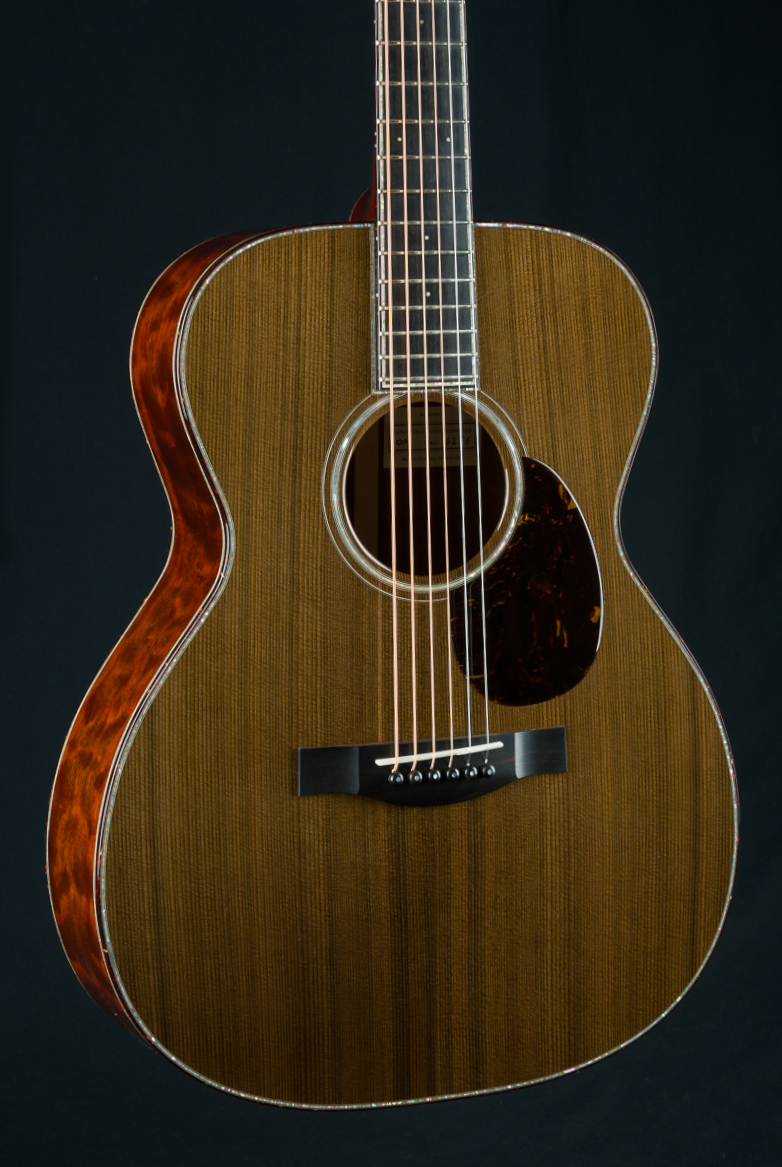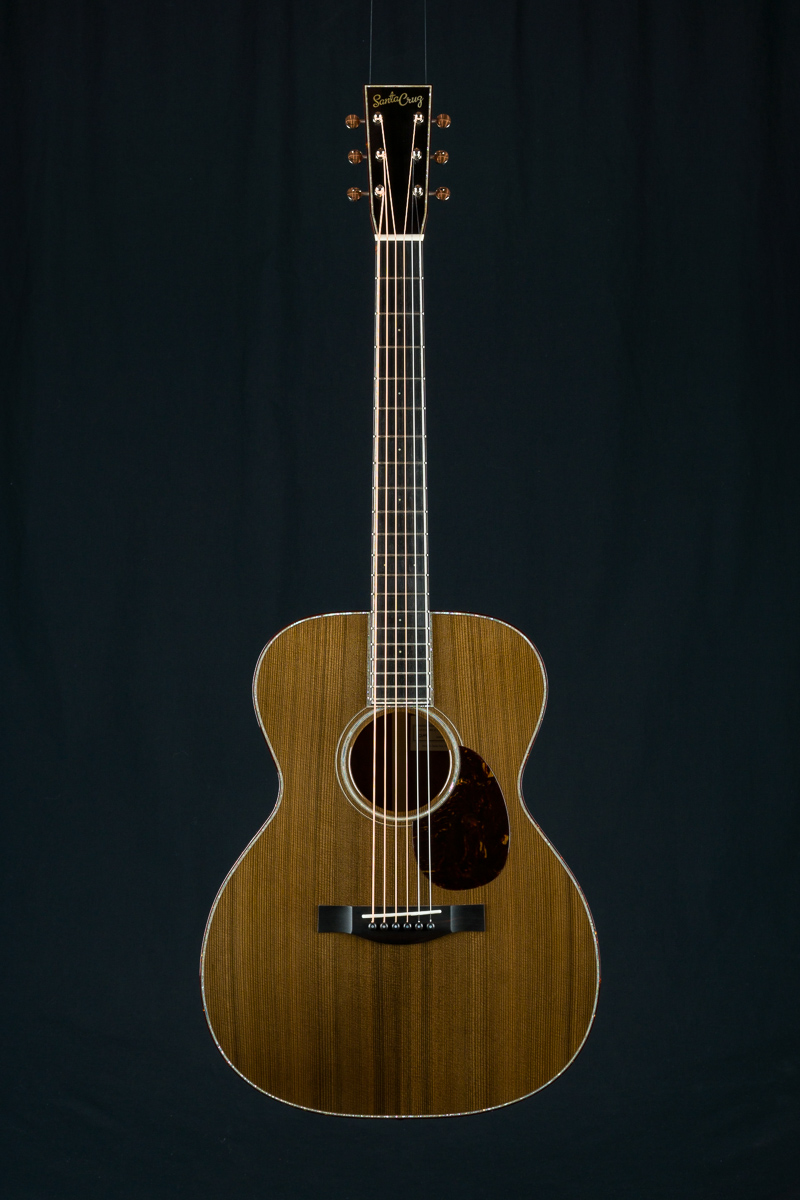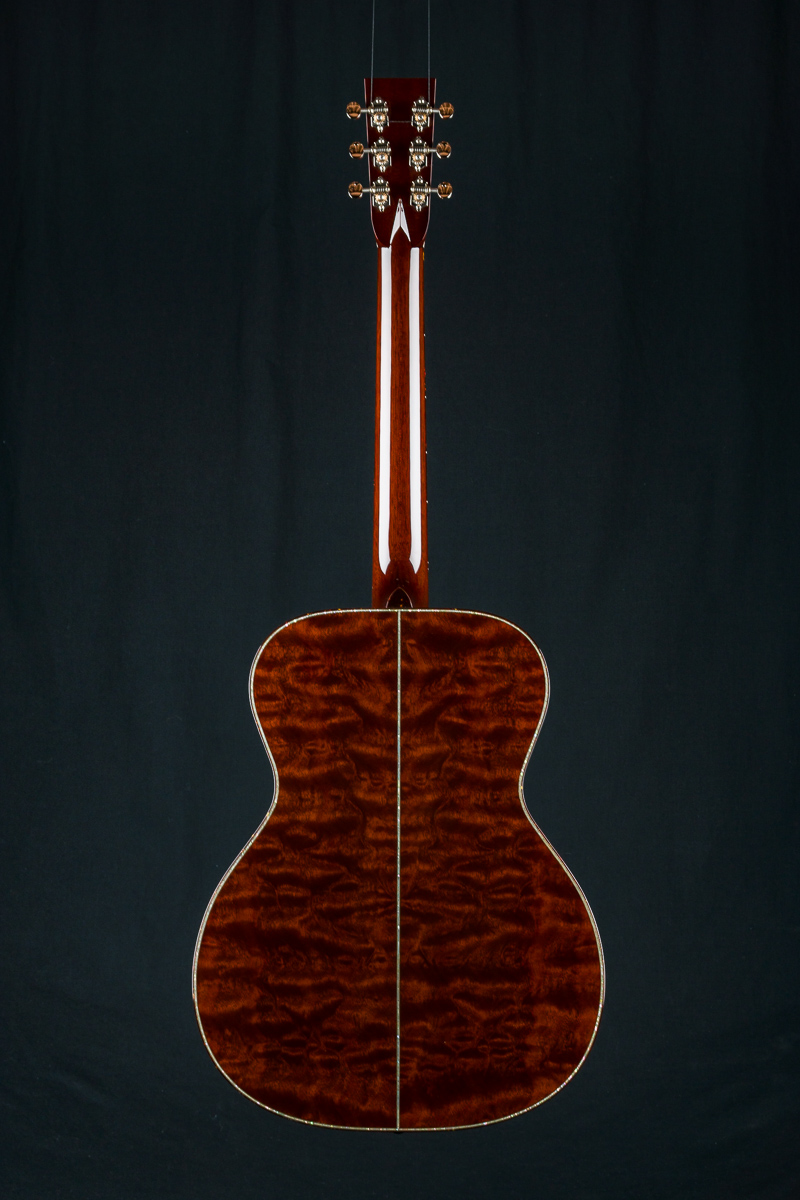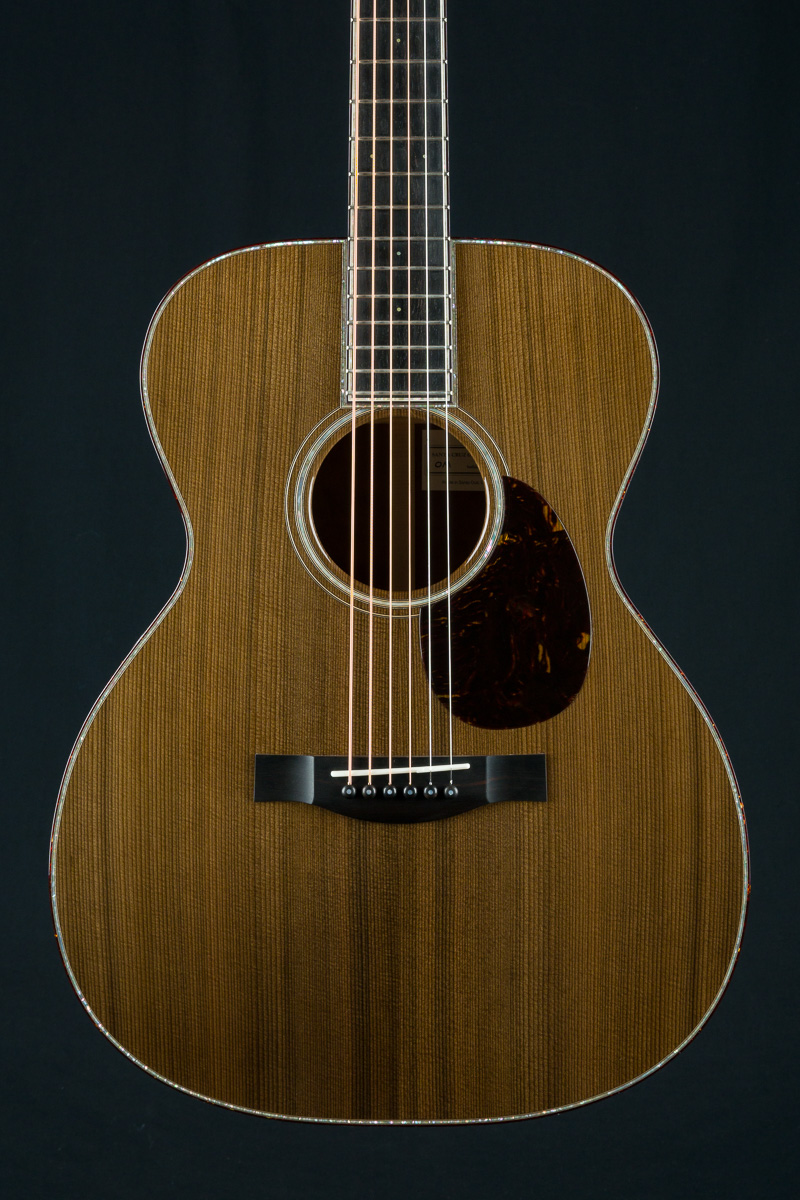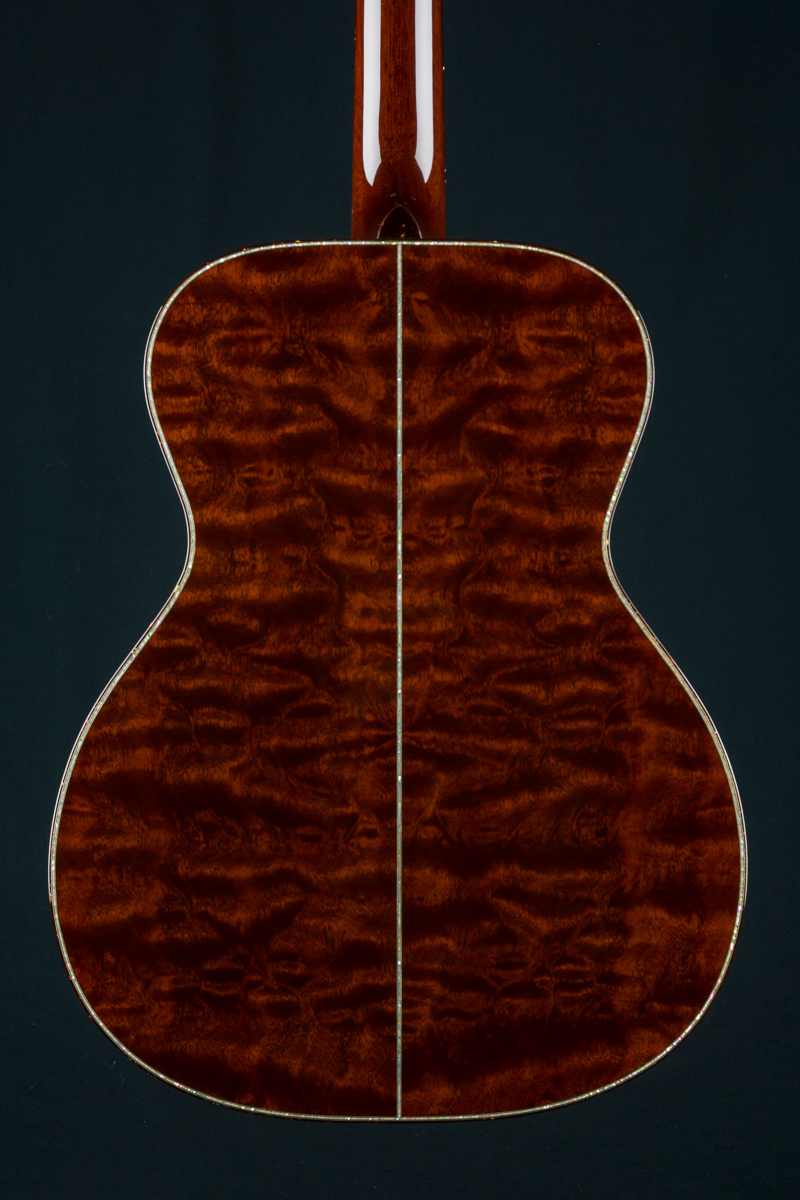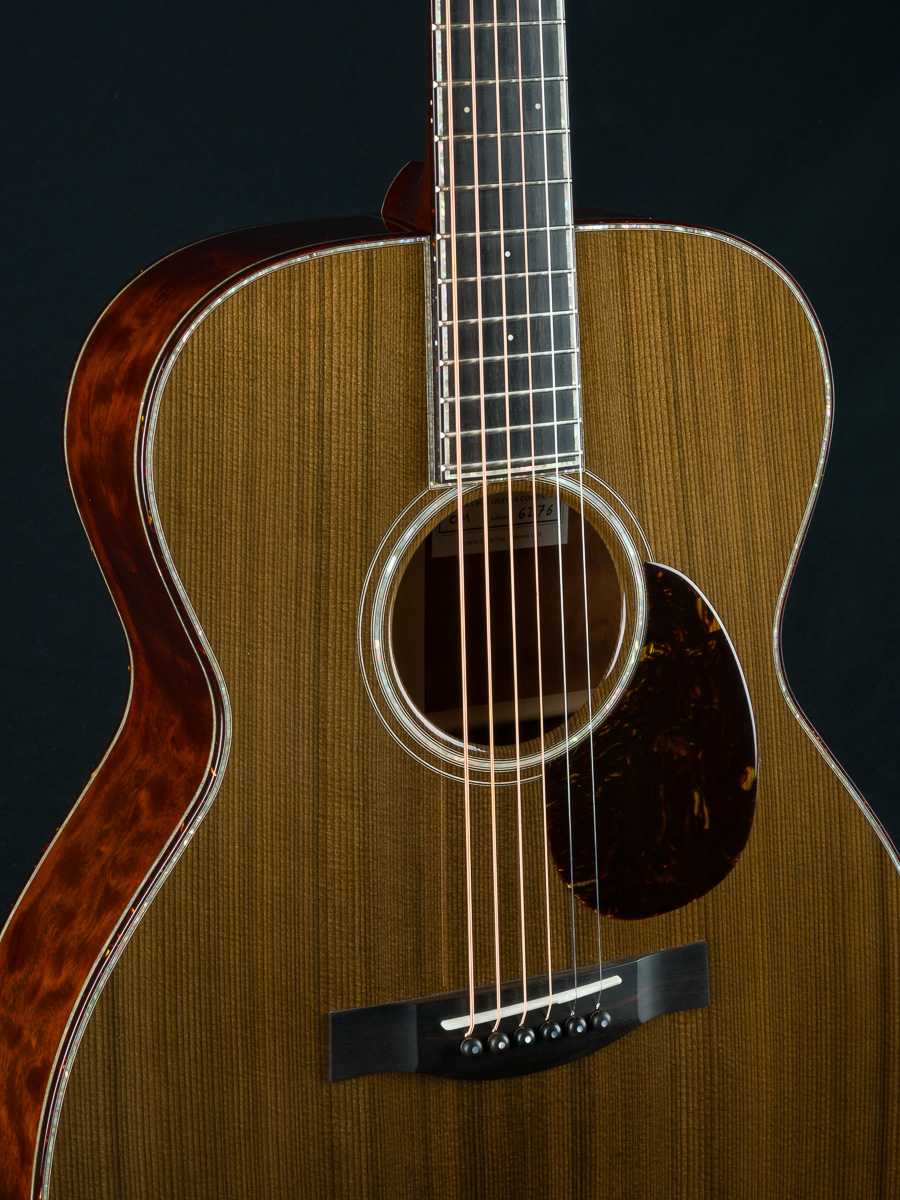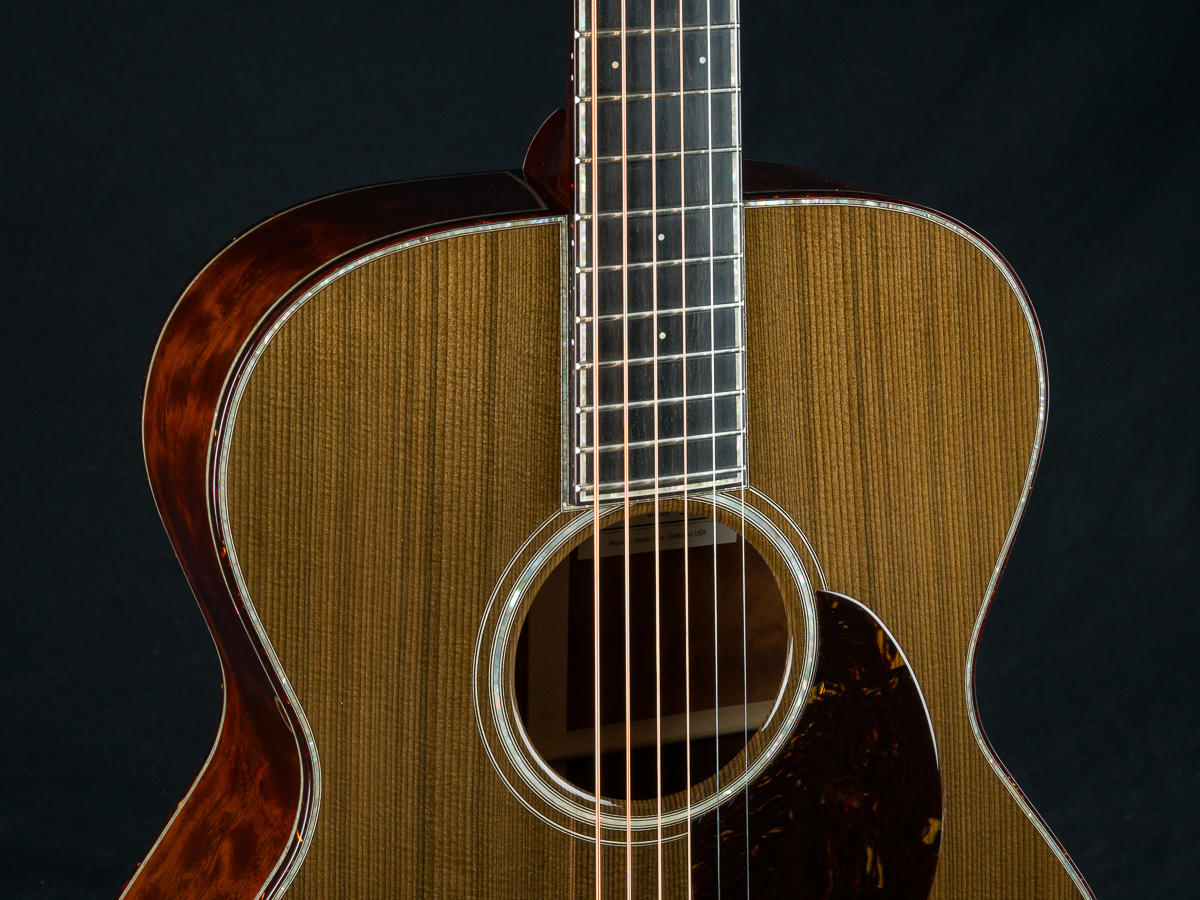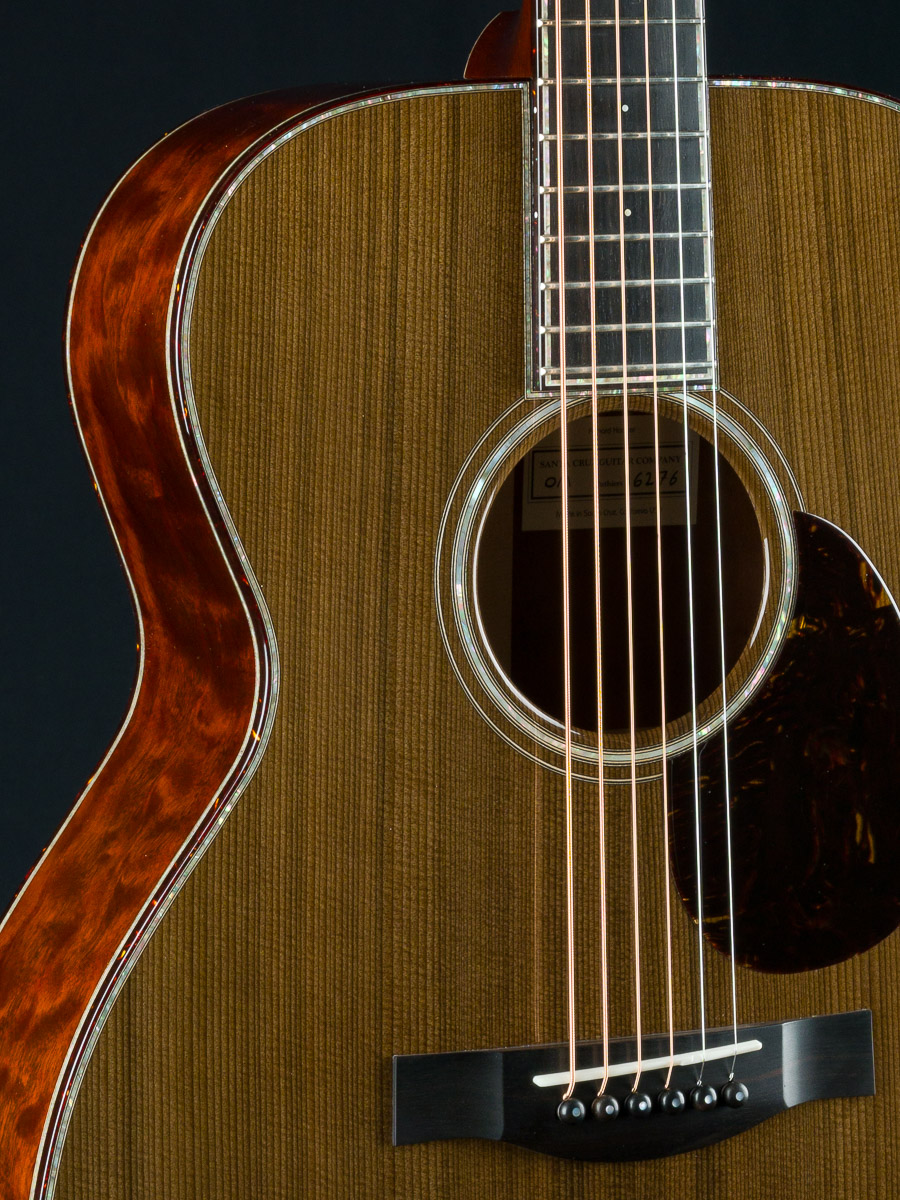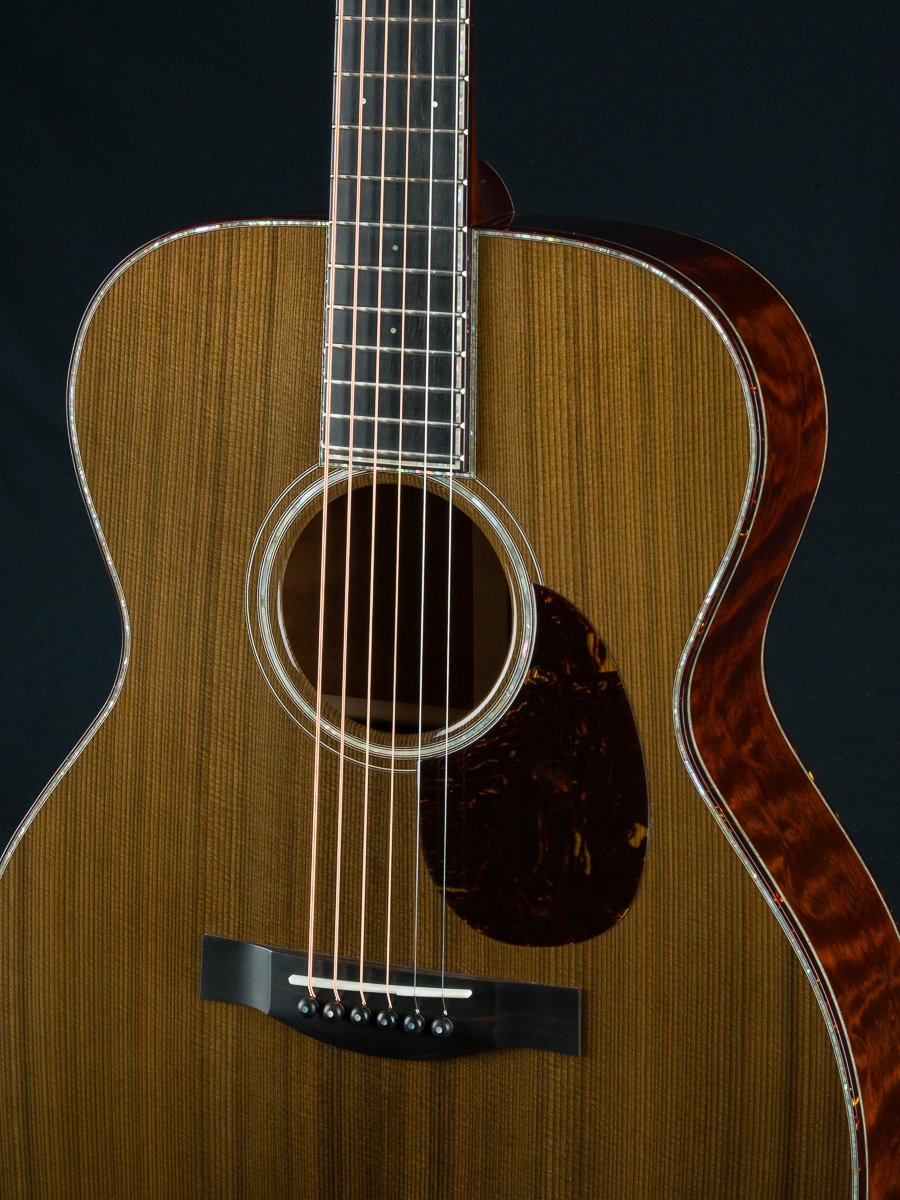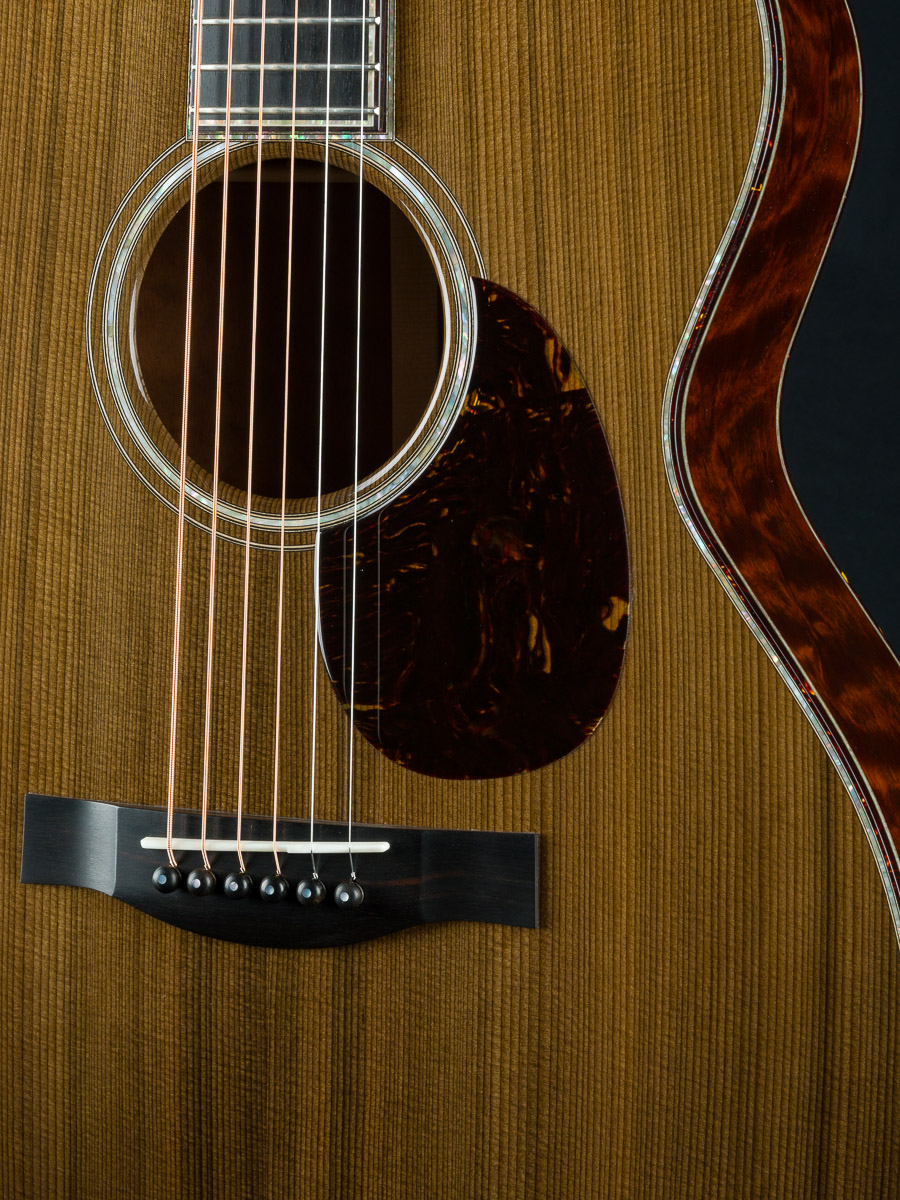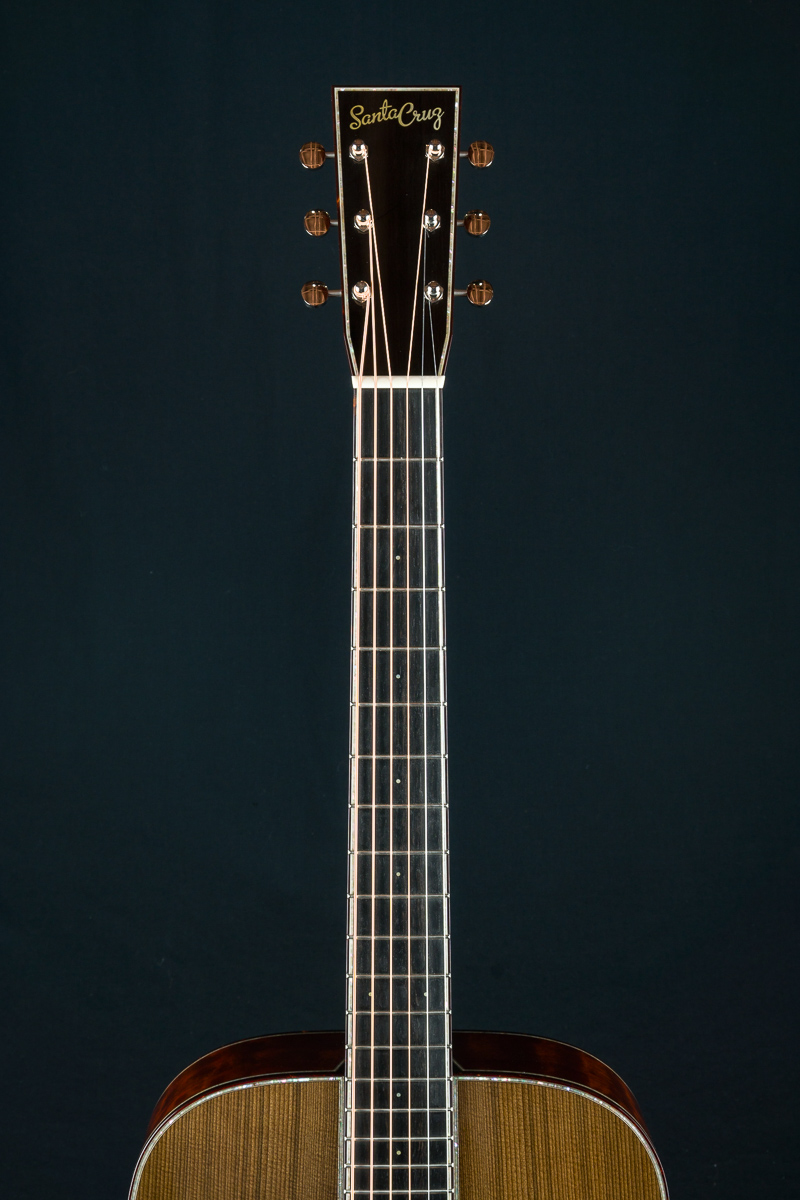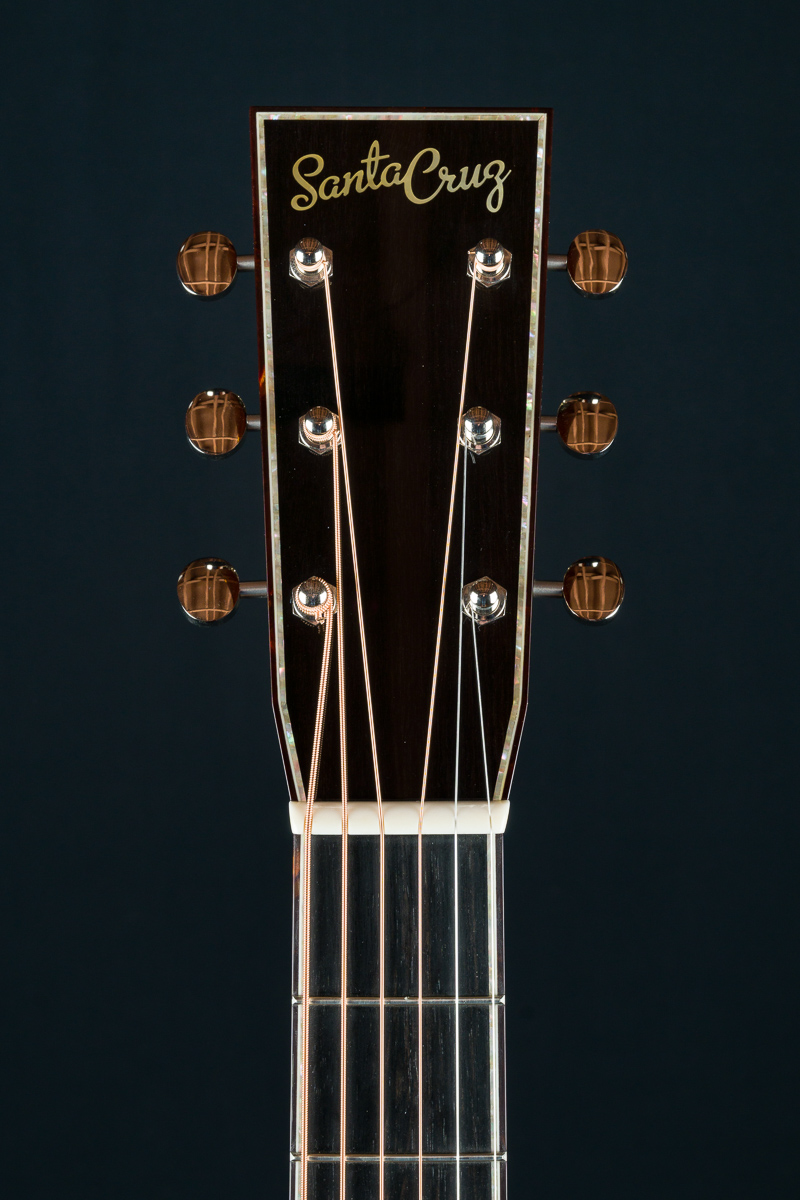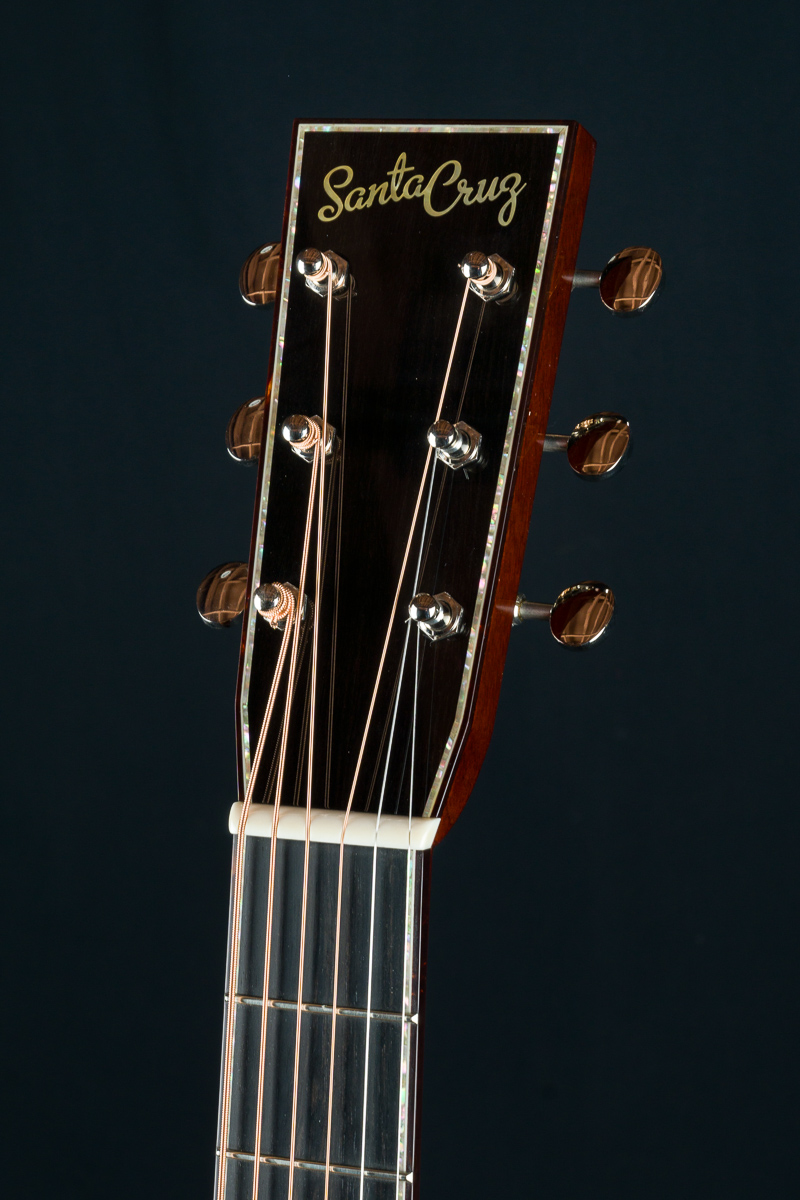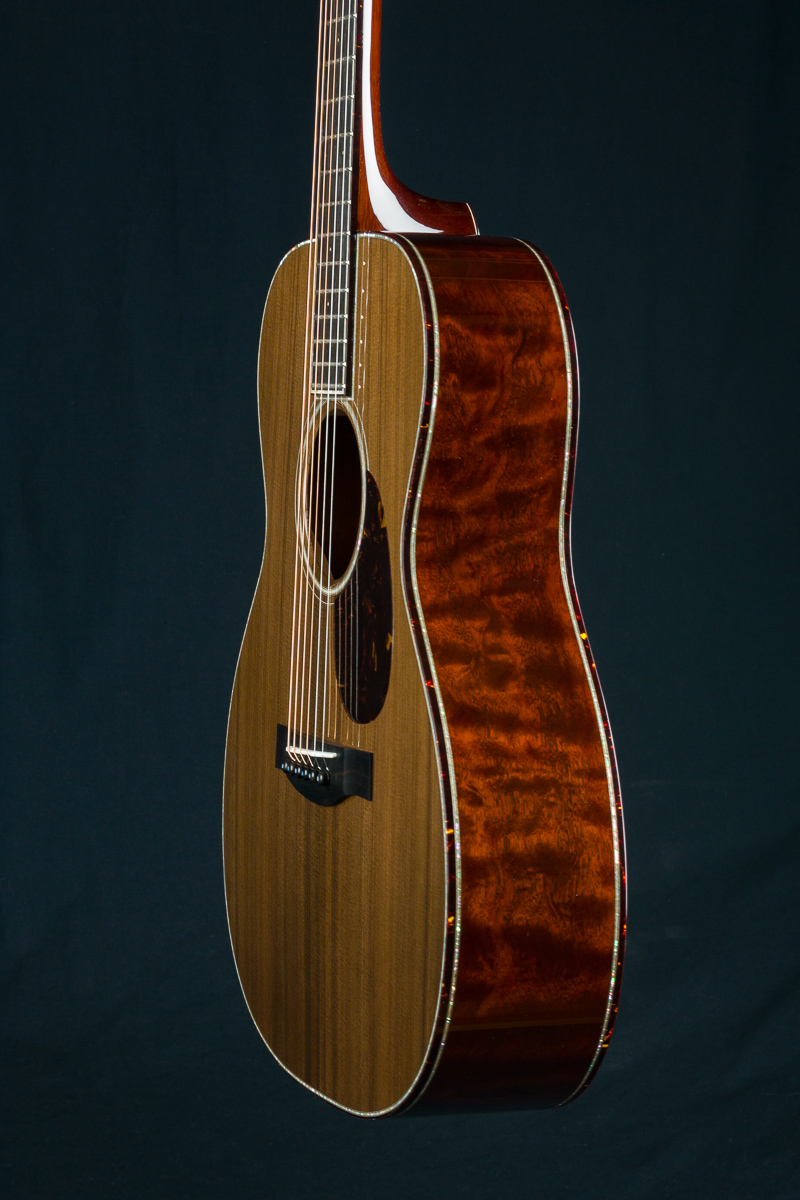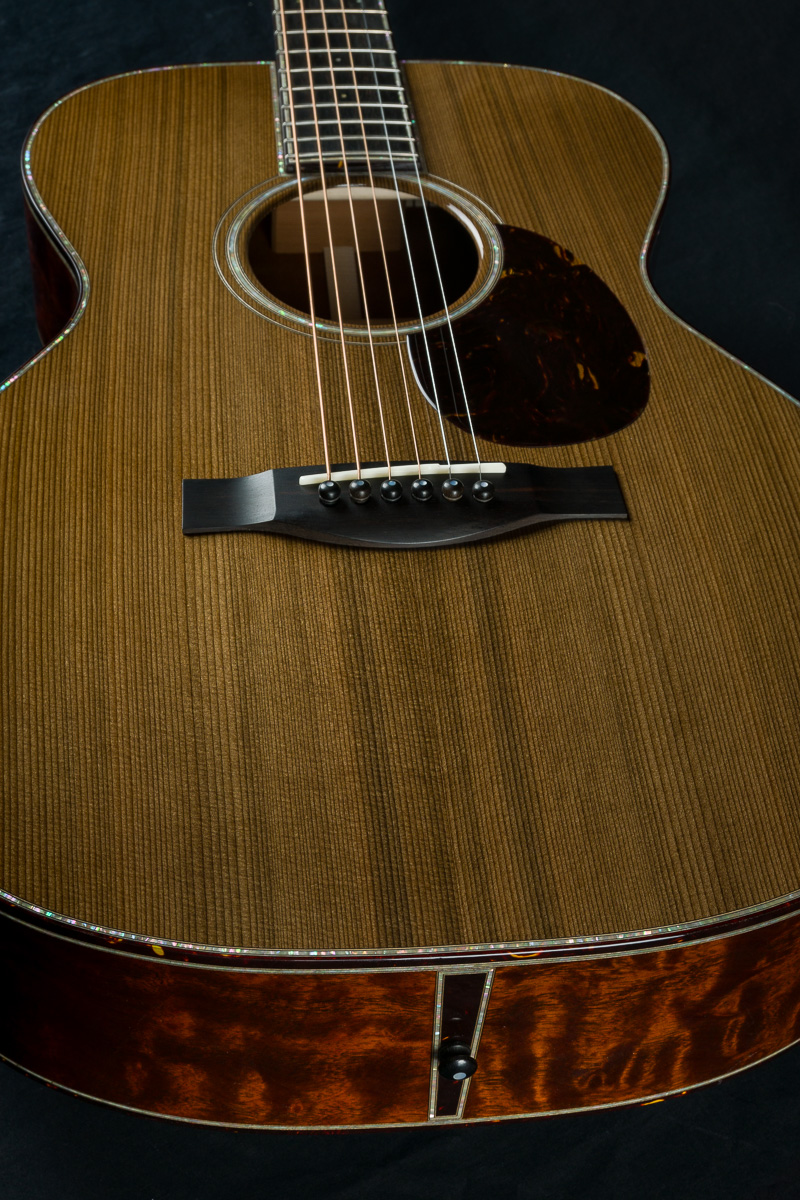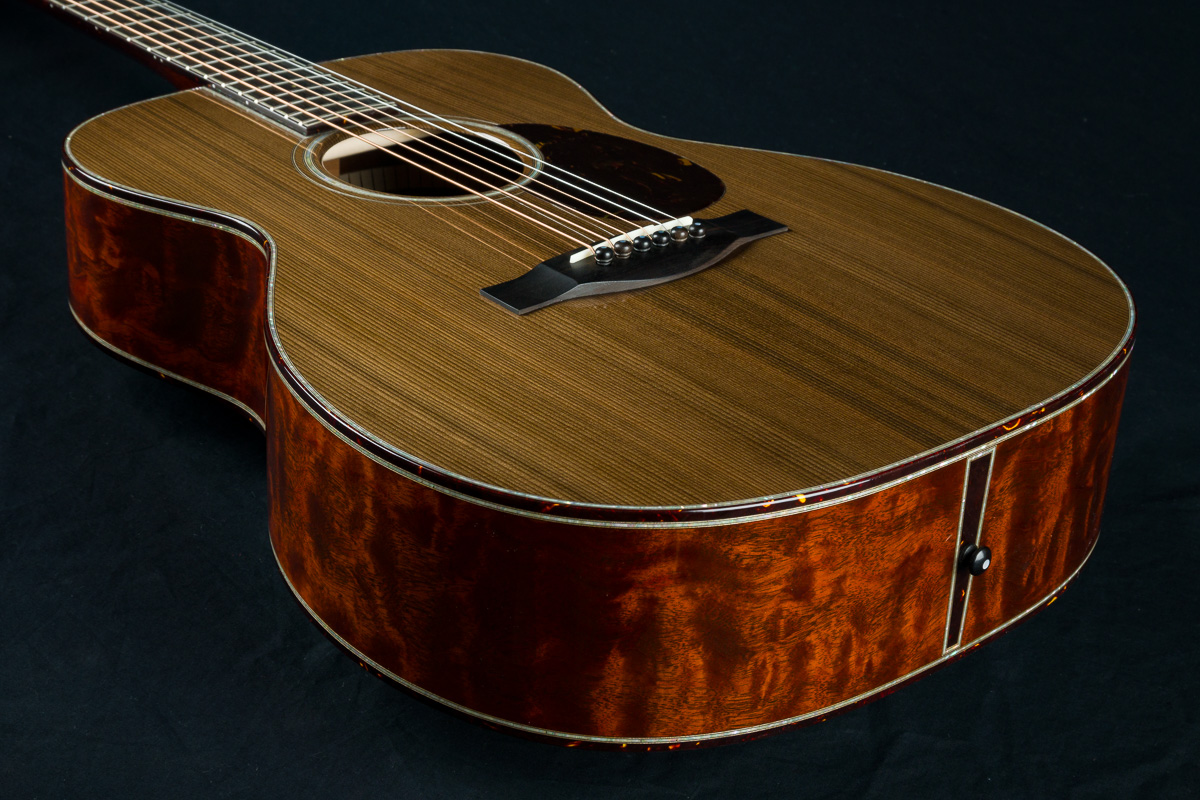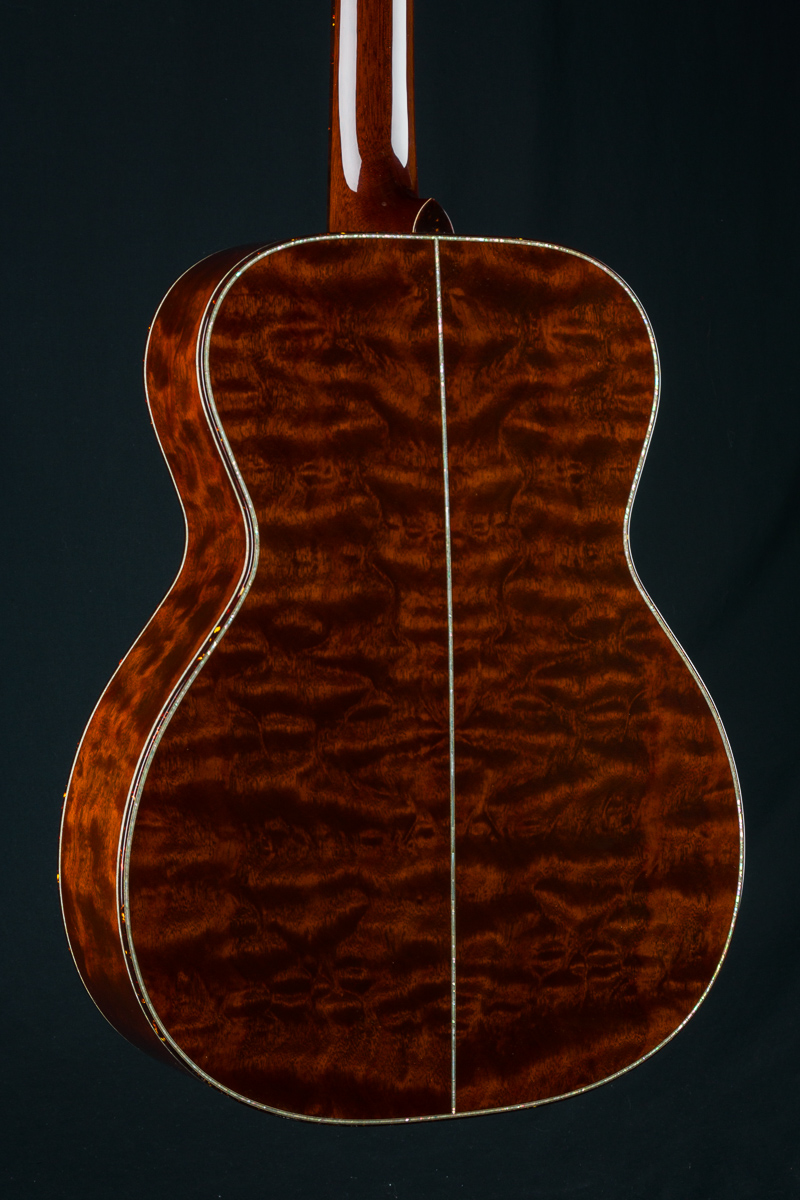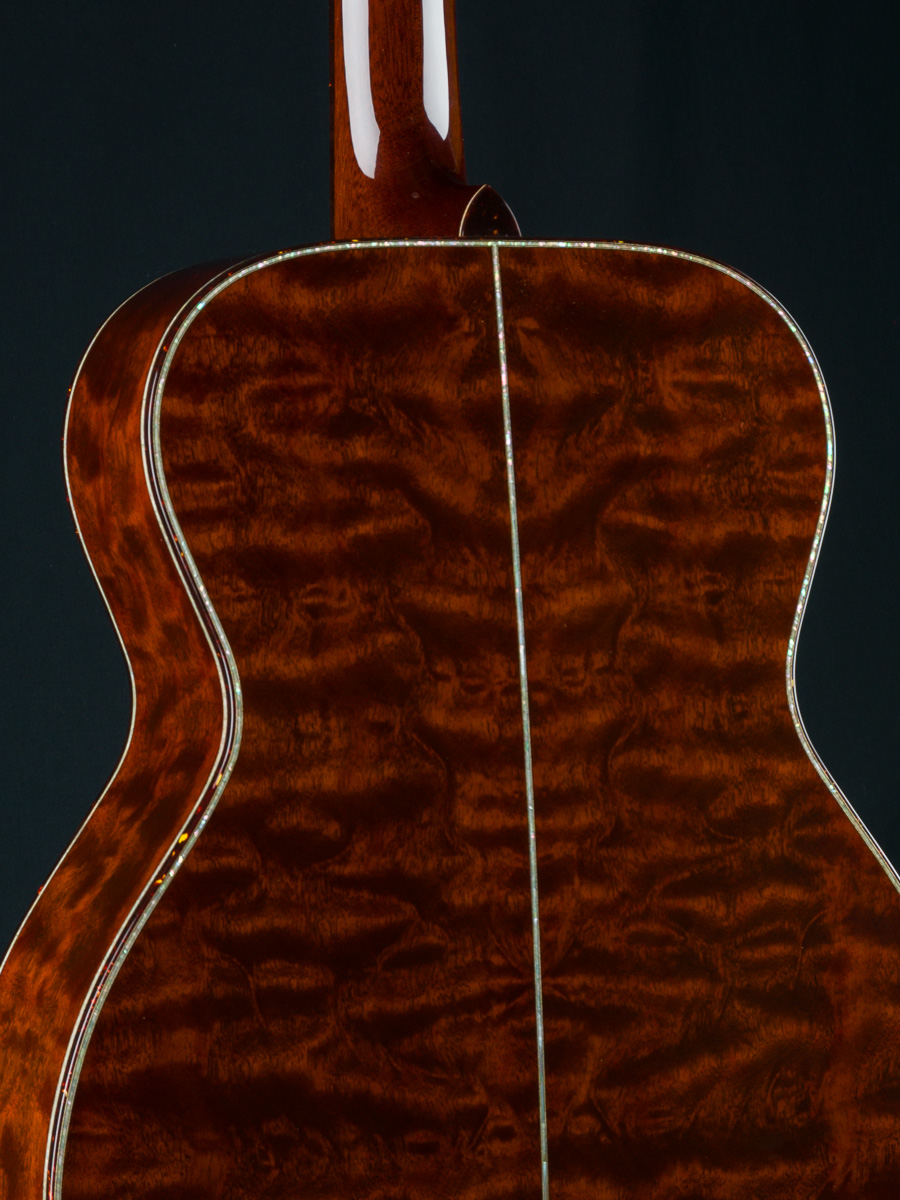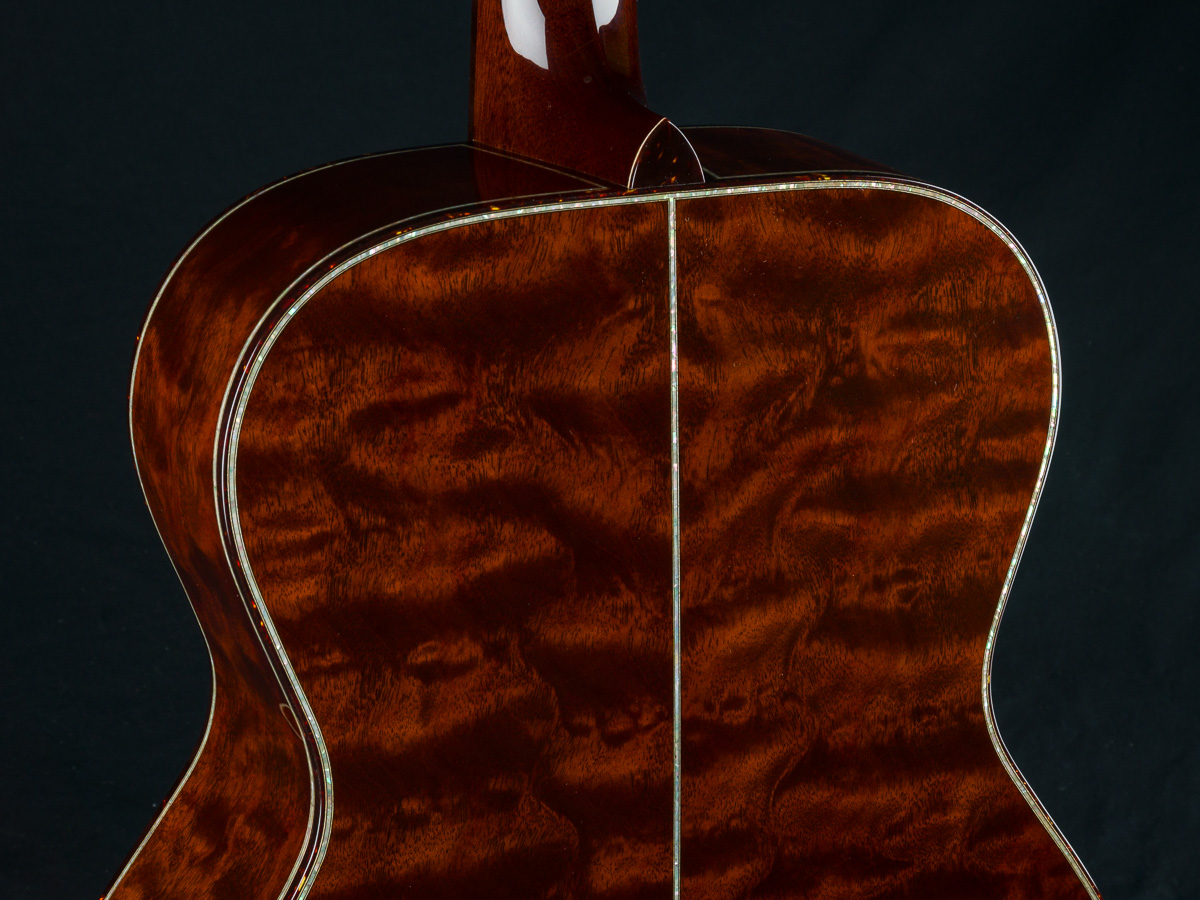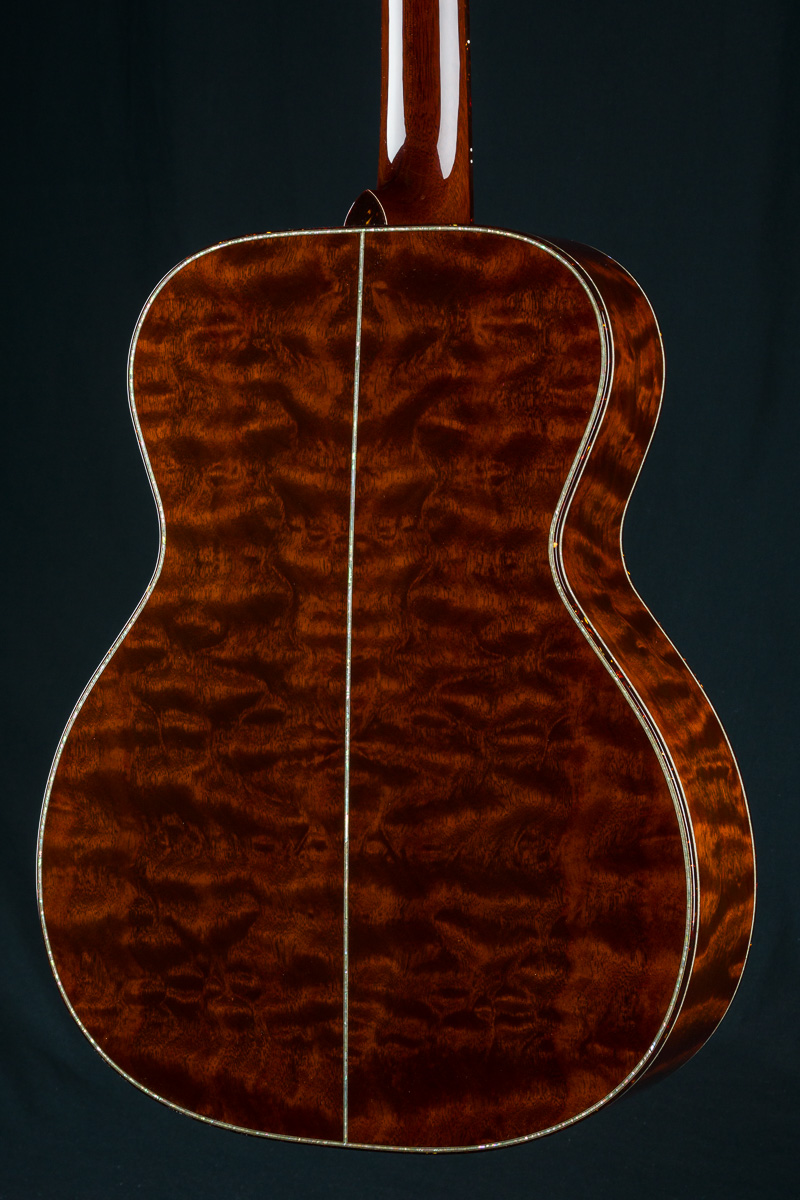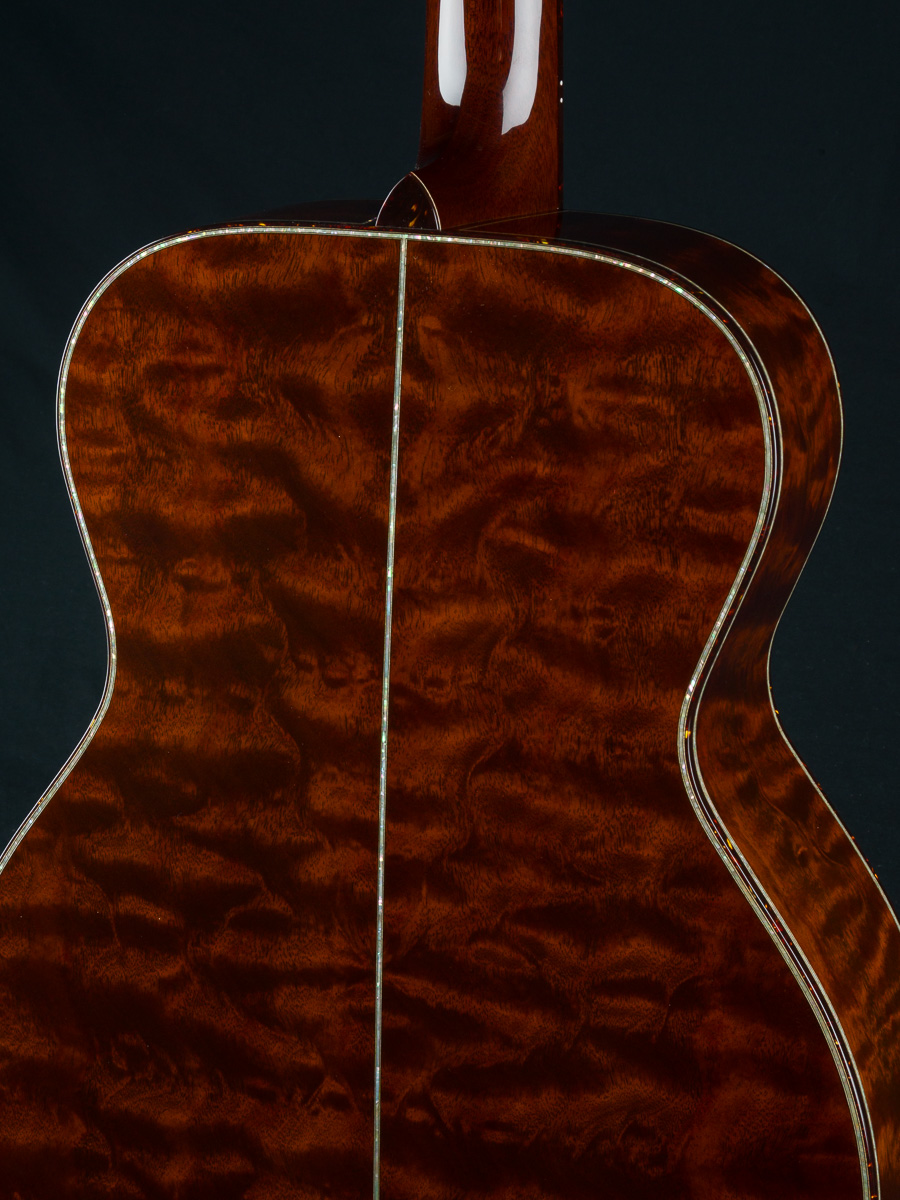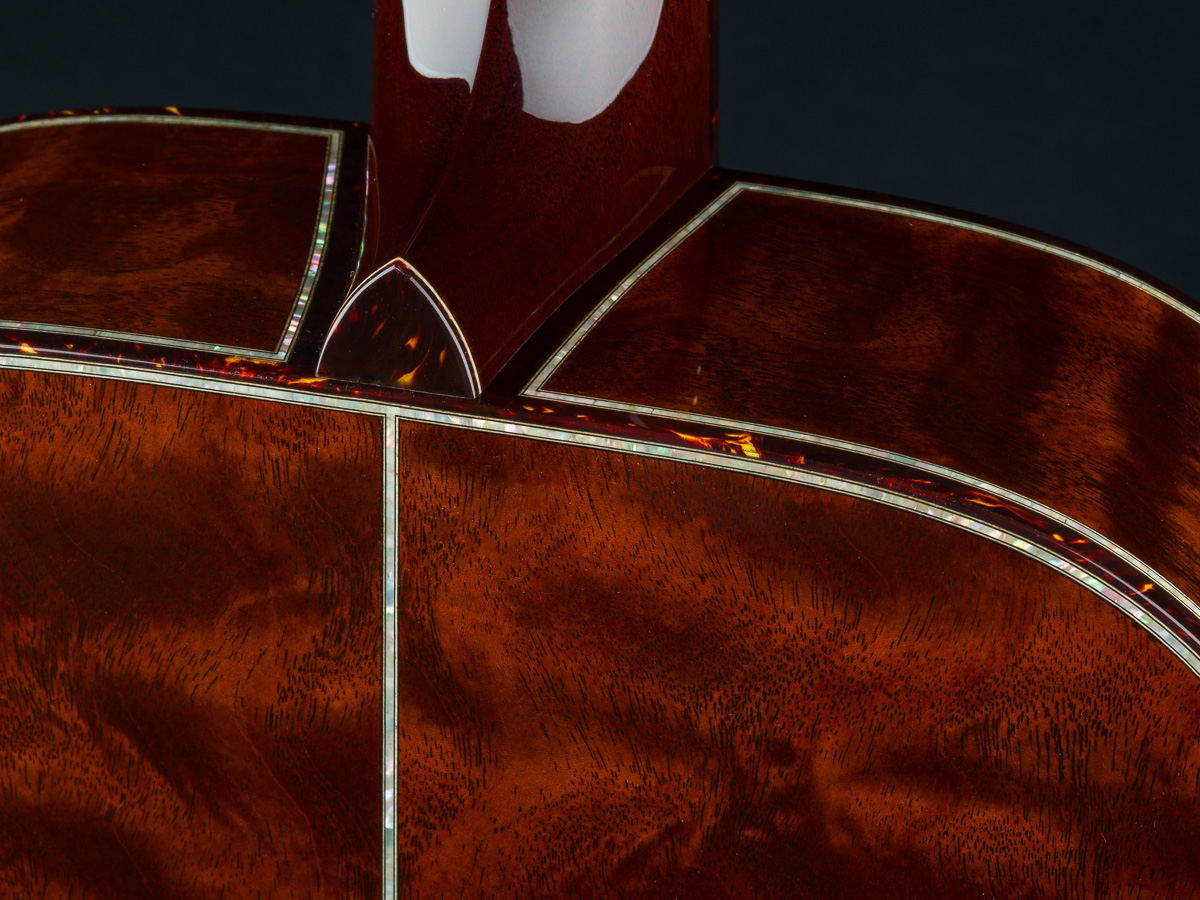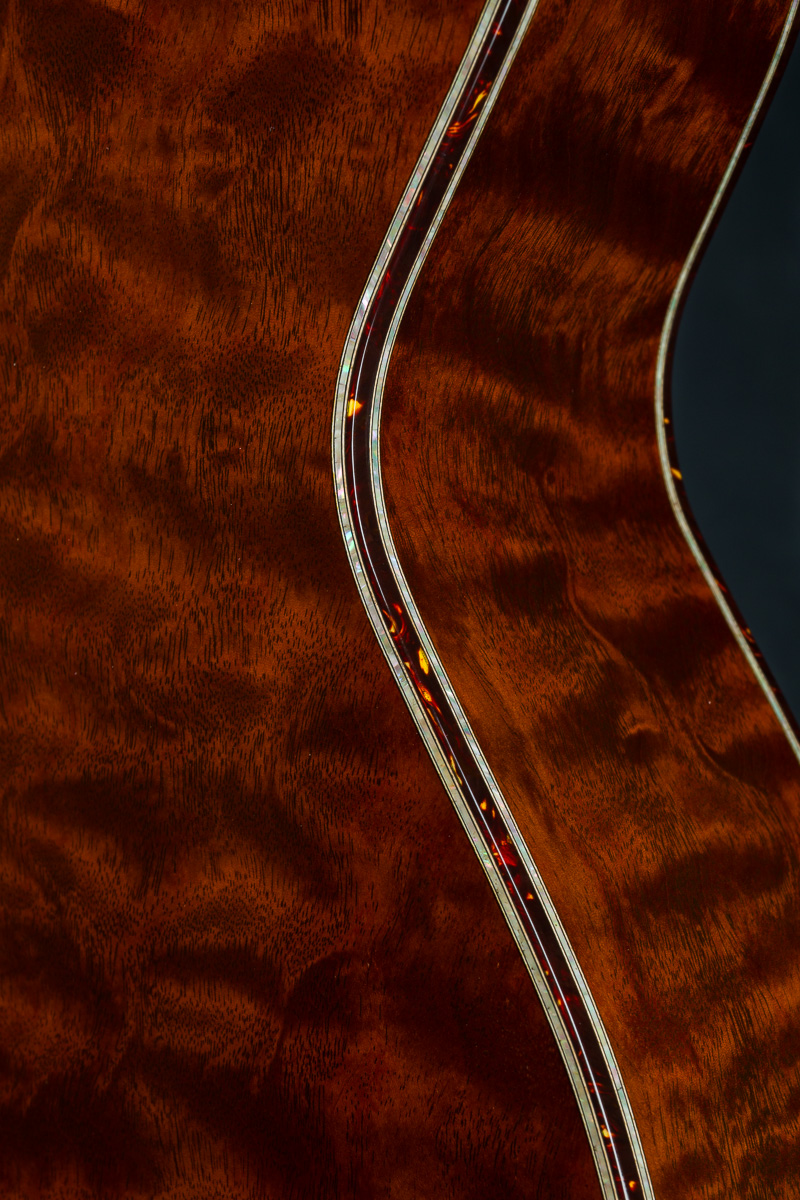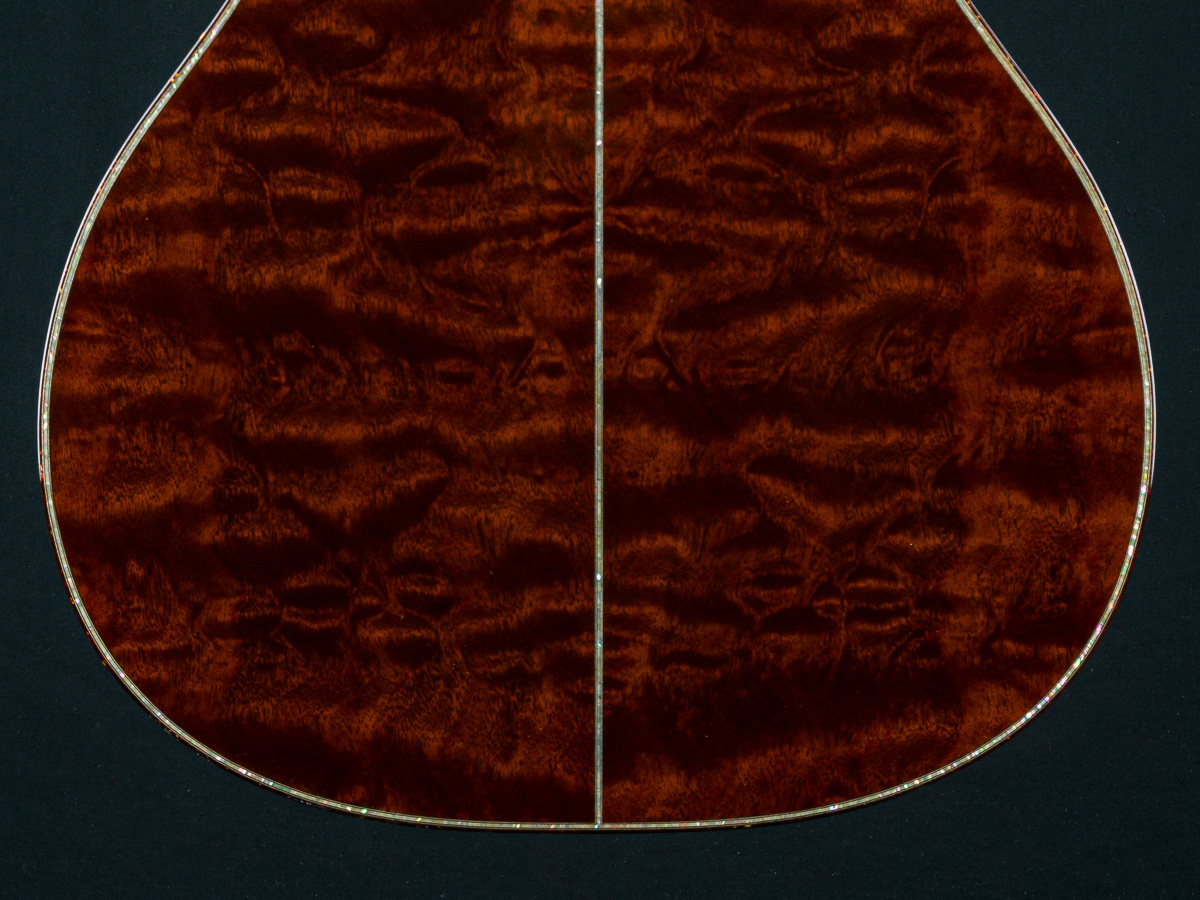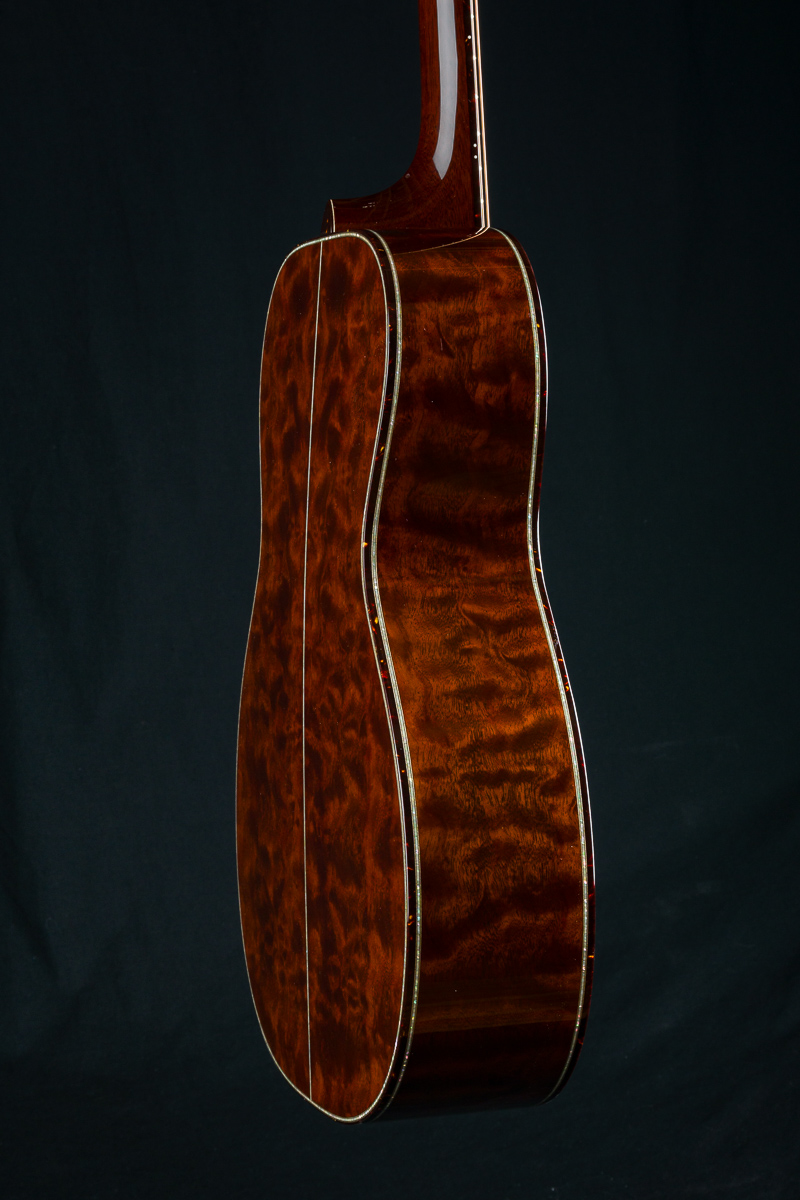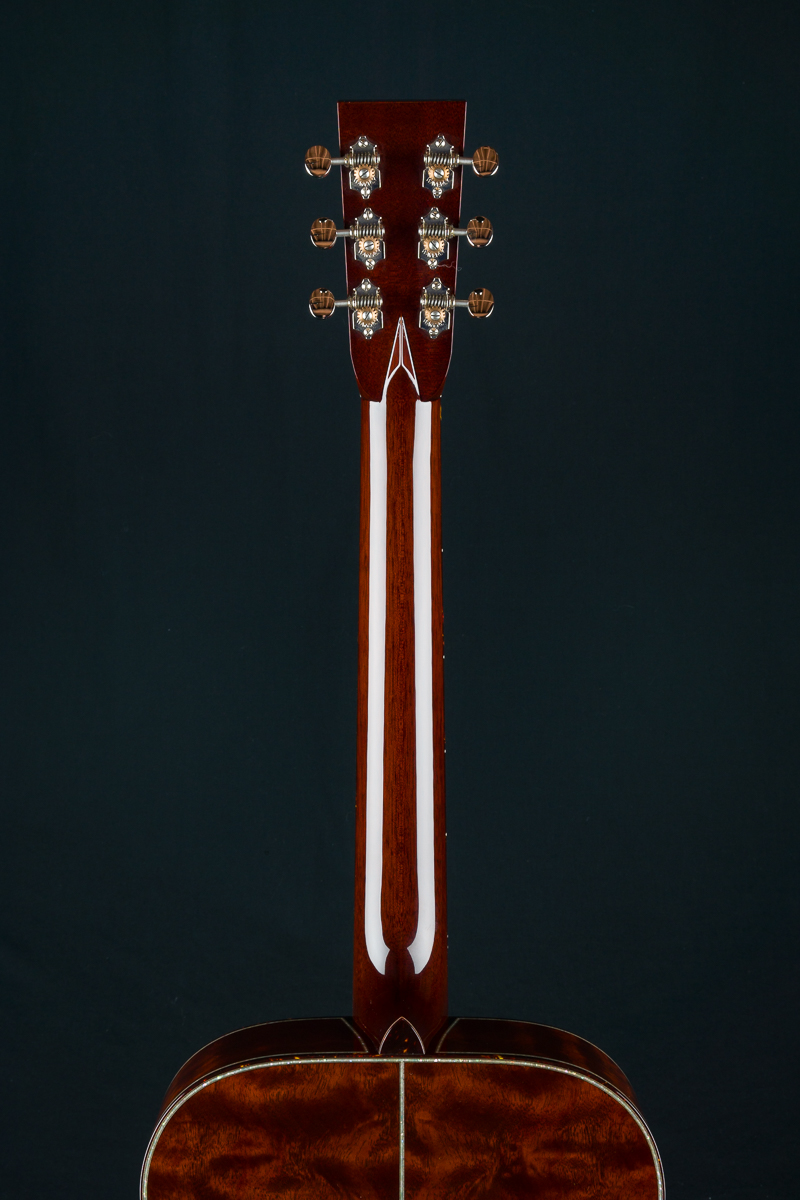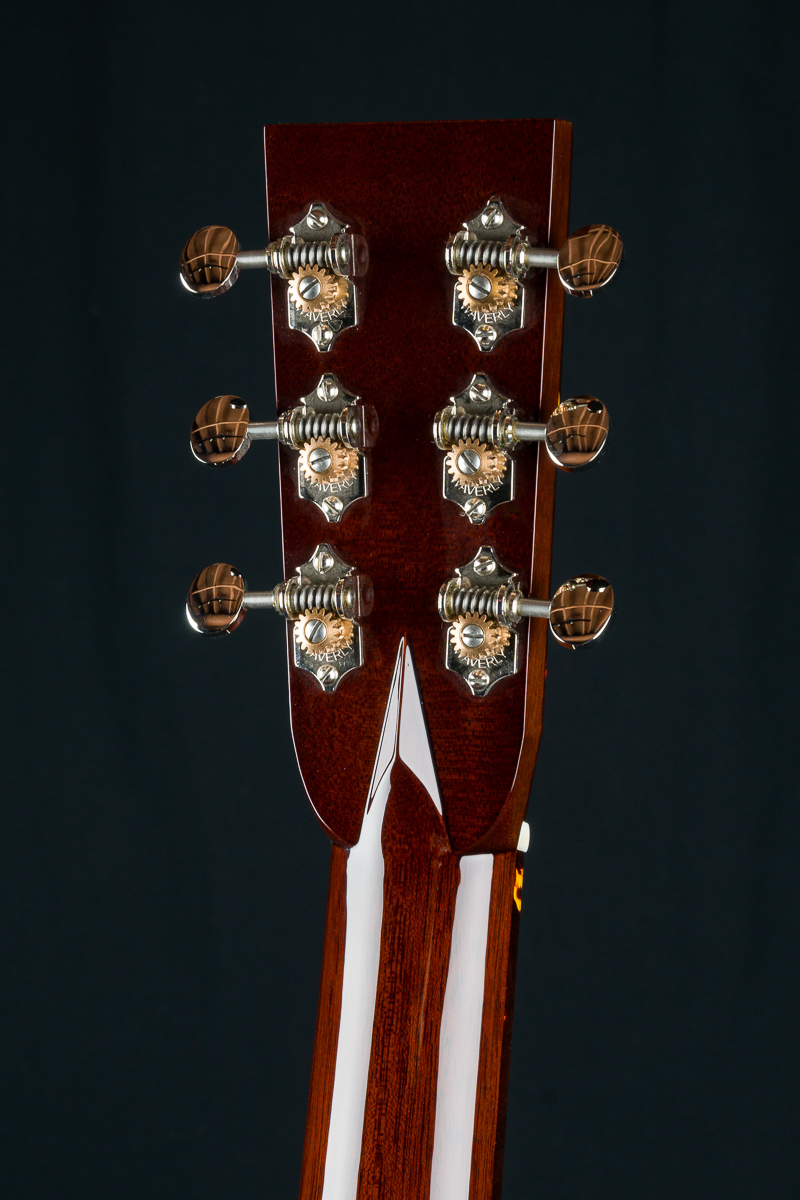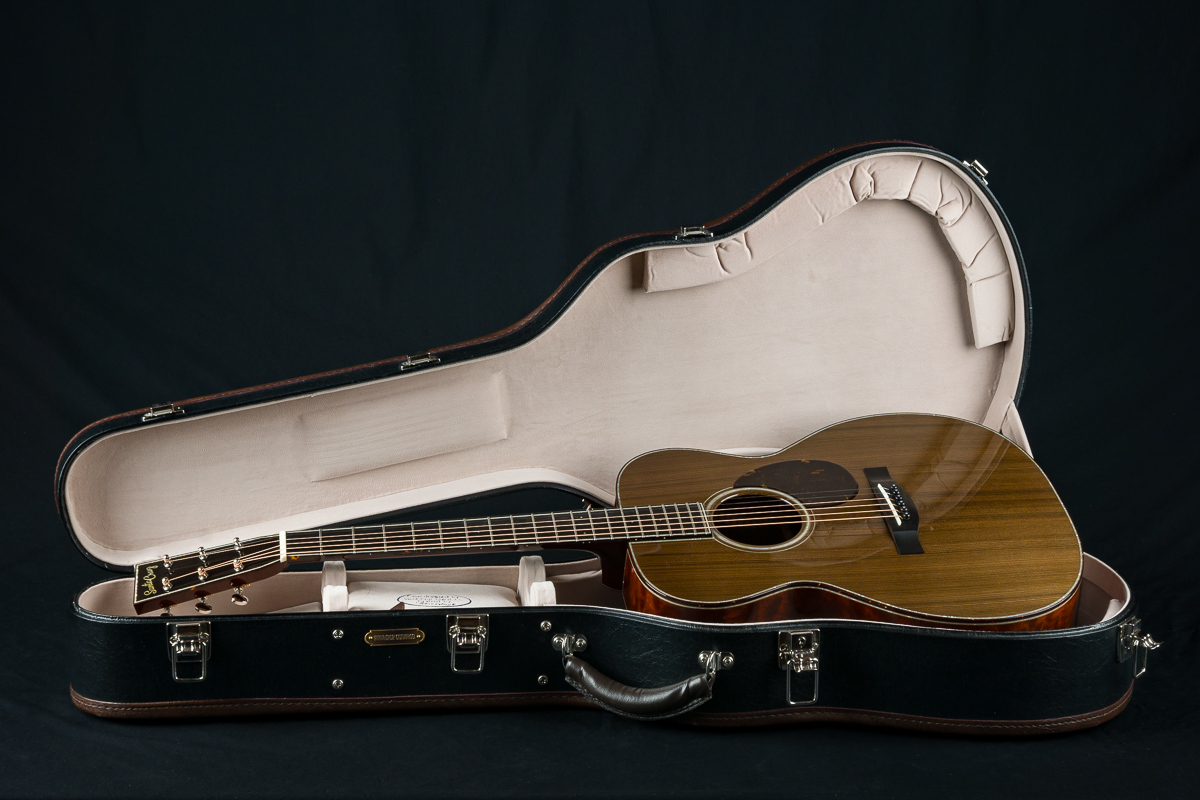Talk about a combination of highly sought after premium woods in a unique and beautifully ornate Santa Cruz OM custom build. If you are looking for a master crafted guitar built with extremely rare tonewoods with a story, this is for you. One of our favorite wood combinations, this heirloom quality collector’s OM-45 is built with the legendary “The Tree” Mahogany back and sides paired with a rare Renaissance Cedar top. Dazzling Japanese Awabe Pearl 45-style trim gracing all the edges- top, rosette, back, sides, fretboard, headstock, backstrip, neck heel and wedge. This stunning build is wrapped in full backlit tortoise body, fretboard and headstock bindings and is topped with Waverly Nickel tuners. This OM-45 was a Santa Cruz centerpiece at the 2025 NAMM Show in Anaheim, CA.
‘The Tree’ Mahogany is a highly prized and extremely rare wild figured Mahogany that is considered to be the rarest wood on earth. Cut from a single famous tree, it was over 500 years old when it was cut down in the 1960’s in Belize. Lost to the jungle, this tree was rediscovered over a decade later in the mid 1970’s lying in a ravine. Still considered to this day to be the very best Mahogany available, the mesmerizing geometric patterned figuring found on this premium set is an extremely rare find, plus there is very little of it left in the world today. The fact this wood only comes from one specific tree makes it some of the rarest wood in the world.
The Renaissance Cedar top is a rare natural bog wood sunken over 300 years ago by the last major earthquake to shake the western coast of North America. After being buried for centuries, where it naturally aged and cured over that time in an environment void of oxygen, this wood transformed into something extremely unique. The dark color of the top of this Western Red Cedar is the natural coloring from it’s entombed environment and the added minerals and aging made this an original wood- more like a Spruce in stiffness and increased velocity of sound. A stunning wood, sonically and visually- it’s blackness testifies to a harrowing history, telling of a journey to the underworld, where it was scorched by the flood. Now, reborn, Renaissance Cedar sings of beauty, renewal, and resurrection.
Other features include Adirondack Spruce scalloped bracing, Mahogany V shaped buffed neck with volute, Ebony fretboard and bridge, custom Japanese Awabi Pearl back strip, backlit tortoise custom wedge and heelcap, Gold Pearl script logo and dot fretboard inlays, Ebony headstock overlay, Ebony pins with Pearl dots, Bone nut and saddle, tortoise pickguard, 1 3/4″ nut width, 25.375″ scale length and more.
The Story of Renaissance Cedar:
Late on a winter night, in the first month of 1700 AD, the Juan de Fuca tectonic plate lurched forward and dove beneath the North American plate. This produced the last major earthquake to have shaken the western coast of North America. One can only imagine the devastation that reverberated up and down a thousand miles of Cascadian coastline. Whole forests that had stood for centuries fell into the sea. Tsunami waves ravaged shorelines. Lowlands sank and were inundated. Some of the trees in these coastal forests became entombed, their watery graves cut off from all life and sustenance: no light, no air, no microbes. Blackness. Over time — centuries — iron compounds in the earth leached into the pores of the once living wood. There, iron mixed with tannin, dark alchemy ensued, and the undecayed wood took on the tones of its grave — a metamorphosis of metachrosis. How many times does the ocean address the land while the sun is waking? How many answers must the shore provide before the waves are satisfied? By rivulet, storm, and swell, the waters erode whatever the land will relinquish, and then they take some more. How many waves crash upon the shore, over centuries? Born of water, Renaissance Cedar is Thuja plicata’s rarest and finest form. Its blackness testifies to a harrowing history, and tells of a journey to the underworld, where it was scorched by the flood. Now, reborn, Renaissance Cedar sings of beauty, renewal, and resurrection. Trees that normally don’t produce black timber occasionally do, under particular circumstances: if the tree is a species that is high in tannin, if it becomes buried in anaerobic conditions, while in the presence of water containing dissolved iron and other minerals, and if it stays buried for centuries. Over time, such logs find their way back to the surface, where peculiar woodworkers notice their unique coloring, and gather them up to use in their craft. In Europe, this process yields bog oak, from the Fenlands of England and the backwaters of Slavic river systems. In Australia, this process yields ancient river redgum. In the Cascades and Coastal mountain
ranges of northwestern North America, the blackened timber is Red Cedar. Bog wood differs from sinker wood in that bog woods are produced by entirely natural processes. Sinker Cedar and Sinker Redwood, as well as the Sinker Cypress from the Eastern US, denotes wood derived from the cast-offs of the timber trade from a century ago. In those days, the logs were extracted from the forests via river courses instead of logging roads. For various reasons, a certain and negligible portion of these logs took on so much water that they sank to the bottom of the rivers and over time became embedded in the riverbed or were washed out to sea. Sinker wood comes by way of industrial salvage. Bog wood — known by its blackness — comes from beyond the pale. Renaissance Cedar is a North American bog wood. It is likely that large quantities of Cedar were condemned to the depths by the 1700 Cascadian Earthquake. Remnants of the trees can be seen up and down the coasts of Oregon and Washington in ghostly stump forests that emerge and disappear with the tides. The logs from which Renaissance Cedar is produced are rare and cherished specimens of this ancient and mysterious process.
Includes Ameritage hardshell case and Lifetime Warranty.
Free shipping in the continental United States.
–

